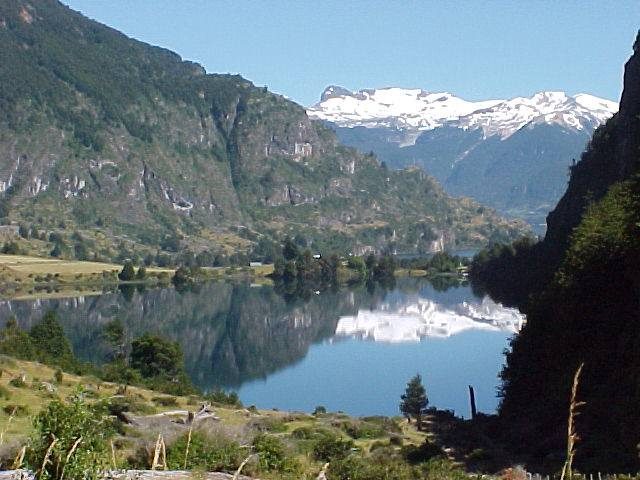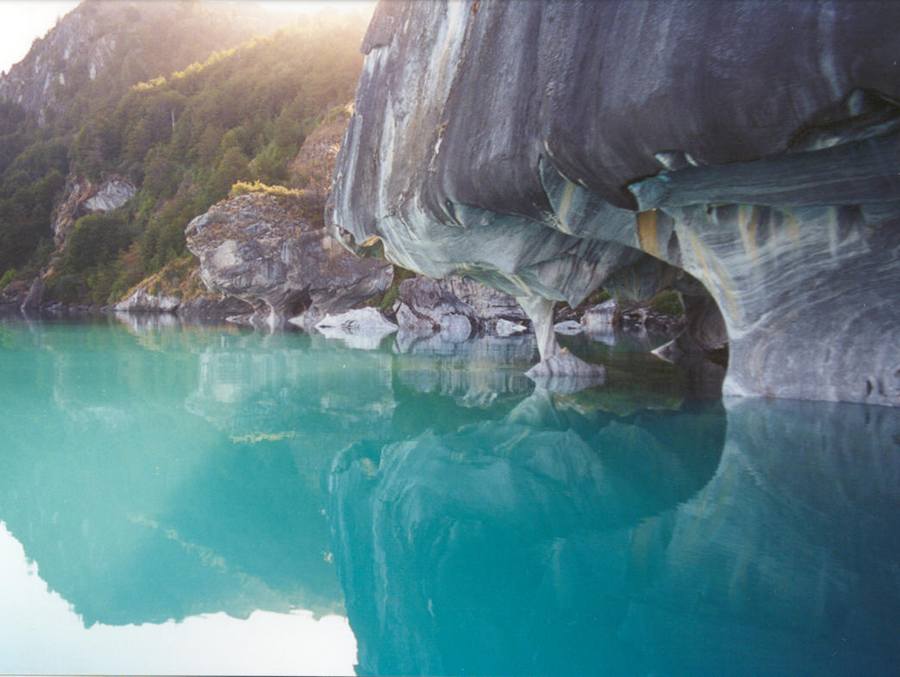Coyhaique and Port Aysén

Austral Route Puelo Futaleufu

Austral Route Queulat Puyuhuapi National Park

The paradise of fly fishing is found in the most important city of the Central Chilean Patagonia; known as Coyhaique, which means "where there are lagoons", the capital of the Aysén Region, is located on the eastern slope of the Andes, where the Simpson and Coyhaique rivers converge, a center of attraction for those who enjoy rafting and kayak descent.
Located in the shelter of the rains, Coyhaique is an access road to the Carretera Austral and to Puerto Chacabuco, starting point of maritime cruises to the San Rafael Lagoon, one of the most important parks in the region with an area of 1,742,000 hectares , where is the whole of Northern Ice Fields, one of the largest glaciers in the world. 59km away from Coyhaique is located Puerto Aysén, located at the foot of Cerro Marchant at the confluence of the rivers Aysén and Los Palos, it was the first port in the region, which unfortunately was drained due to the sediment drag of the Aysén River due to erosion produced by deforestation caused by forest fires. The natural attractions of its surroundings allow you to enjoy various tourist activities.
Located in the shelter of the rains, Coyhaique is an access road to the Carretera Austral and to Puerto Chacabuco, starting point of maritime cruises to the San Rafael Lagoon, one of the most important parks in the region with an area of 1,742,000 hectares , where is the whole of Northern Ice Fields, one of the largest glaciers in the world. 59km away from Coyhaique is located Puerto Aysén, located at the foot of Cerro Marchant at the confluence of the rivers Aysén and Los Palos, it was the first port in the region, which unfortunately was drained due to the sediment drag of the Aysén River due to erosion produced by deforestation caused by forest fires. The natural attractions of its surroundings allow you to enjoy various tourist activities.
With a rainy and cold climate, the Region of Aysén stands out for the great variety of flora and fauna that can be found in the same place. The native forests of lenga, coihue and ñirre, coexist along with foxes, quiques, wild cats, pumas and huiñas, offering tourists a unique natural spectacle in the world.
Although in the region was the presence of man, with indigenous peoples such as the Tehuelches and the Alacalufes, Aysén is of recent settlement. It was alien to the Spanish colonization, remaining in its channels and on the eastern slopes of the Andes pre-Hispanic settlements, nomadic or semi nomadic until recently.
The occupation of the region began in the late nineteenth century in the valleys of the rivers Aysén, Simpson, Cisne and the basin of General Carrera Lake. At the dawn of the 20th century, economic activities of greater volume began, led by livestock companies, which allowed the region to be definitively colonized. Today, thanks to the construction of the northern section of the Carretera Austral in the 80s, a national and international interest was born in visiting the area, renewing tourist activities and generating a greater concern for preserving the environment, making the Region de Aysén retains its natural majesty in the midst of a unique landscape in the world.
Although in the region was the presence of man, with indigenous peoples such as the Tehuelches and the Alacalufes, Aysén is of recent settlement. It was alien to the Spanish colonization, remaining in its channels and on the eastern slopes of the Andes pre-Hispanic settlements, nomadic or semi nomadic until recently.
The occupation of the region began in the late nineteenth century in the valleys of the rivers Aysén, Simpson, Cisne and the basin of General Carrera Lake. At the dawn of the 20th century, economic activities of greater volume began, led by livestock companies, which allowed the region to be definitively colonized. Today, thanks to the construction of the northern section of the Carretera Austral in the 80s, a national and international interest was born in visiting the area, renewing tourist activities and generating a greater concern for preserving the environment, making the Region de Aysén retains its natural majesty in the midst of a unique landscape in the world.
Attractions
The visitor will find one of the most magical places on the planet, native forests, lakes and torrential rivers, are the main attractions of the Aysén Region, where adventure sports and relaxation come together to offer tourists a great opportunity in the middle of the nature.
Activities
Within the Aysén Region, one of the main activities to be carried out is fly fishing in the Elizalde, La Paloma and Riesco Lakes, in addition to touring the Simpson, Manual and Blanco rivers in rafting or kayaking, or simply enjoying the landscapes doing trekking or cycle tourism among the native forests or if you enjoy the snow you can ski during the winter.
Information of interest
1When to go
Throughout the year.
2Location
These attractions of the Aysén Region are 1,629 km. south of Santiago Coyhaique, and Puerto Aysén. to 59 kms. from the city of Coyhaique.
3How to get
The via area is the main access to the region and it is done from Santiago to 3 hours of flight and from Puerto Montt to 1 hour of flight. The main airport is Balmaceda, which has modern and appropriate facilities for passenger reception. If you want to do it by sea, I can sail from Puerto Montt, there are approximately 22 hours of navigation on ferries that make trips with two weekly frequencies. In the summer season, the tourism and cruise ships that arrive in the region through this port increase. The land crossing by the Austral Way from Chaitén or Paso Futaleufú approximately 420 kms. of gravel and to a lesser extent of asphalt. From Argentina, through the border crossings of Coyhaique Alto and Balmaceda to 50 kms. of Coyhaique.
4Weather
The insular area and the western Andean slopes, is characterized by a high and uniform rainfall (over 2,000 mm per year), by an average annual temperature that fluctuates between 7 and 9 C. On the eastern slope of the Andean massif, the rains go decreasing towards the east, appearing approximately between 2,000 and 600 mm. annual rainfall, with seasonal fluctuations that are gradually sharpened. Annual temperatures vary around 9 C., with an increase in thermal amplitude. During the winter, temperatures drop systematically to 0 C. The snowfall is therefore frequent. In the engilaciadas summits and ice fields of the mountain range. The average temperature does not exceed 0 C. Therefore, its precipitations are constantly solid.
5Services
The region is equipped to offer basic services of food and accommodation, where you can find hostels, cabins, apartments, lodges, hostels, hotels, hotels, lodges and residences.
6Surroundings
Balmaceda, Villa Ortiga, Simpson Valley, El Blanco, Puerto Aysen, Villa Mauihuales, Villa Amengual.
Destinations
Port Aysen
Skiing center
Paloma Lake
Lake Risk
Simpson River
Coyhaique National Reserve
Coyhaique
Cerro Castillo National Reserve
Coyhaque
Lake Elizalde
Simpson River National Reserve


